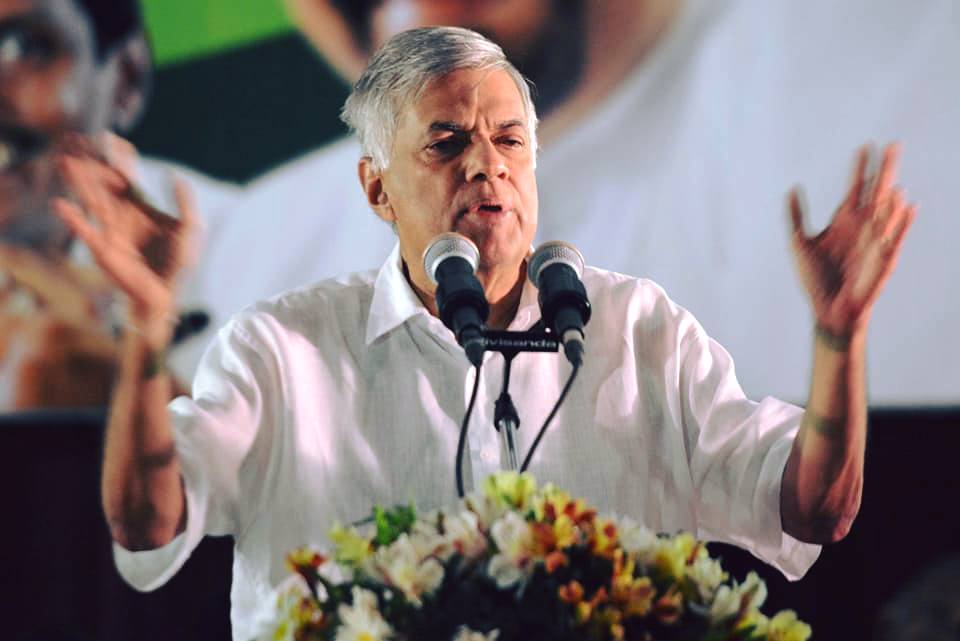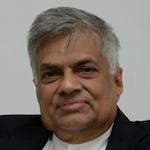Power Struggle In The Indian Ocean & Sri Lanka’s Foreign Policy

 Four Centuries of Western domination in the Indian Ocean has come to an end. Asian nations are re-emerging as Economic and military powers. This has brought a new focus on Asia and the long neglected Indian Ocean region. It also gives Sri Lanka’s foreign policy a new impetus to play a significant role in the region.
Four Centuries of Western domination in the Indian Ocean has come to an end. Asian nations are re-emerging as Economic and military powers. This has brought a new focus on Asia and the long neglected Indian Ocean region. It also gives Sri Lanka’s foreign policy a new impetus to play a significant role in the region.
The foreign policy of newly independent Sri Lanka under Prime Minister DS Senanayake focussed on Asia
* Supported the independence struggle in Indonesia
* Recognized the Peoples Republic of China and
* Called for a formal peace treaty with Japan.
* Sri Lanka and Australia proposed the Colombo Plan at the Commonwealth Foreign Affairs Conference held in Colombo in 1950
* Entered into the Rubber-Rice Pact with China in 1952
Thereafter Sir John Kotalawela took the initiative to summon India, Myanmar, Pakistan and Indonesia the other Asian powers to meet in Colombo, in April 1954. The phrase non-alignment was used for the first time at this meeting. The Asian powers in turn summoned the 1955 Afro-Asian Conference in Bandung which was also attended by China and Japan.
The next step was a large gathering which included non-Afro Asian nations.
In 1956 Nehru, Nasser and Tito signed a declaration in Yugoslavia calling for a Non-Aligned Movement. Prime Minister Sirimavo Bandaranaike of Sri Lanka one of the initial conveners of the first meeting of the Non Aligned Movement played an important role during her tenure in office including holding the 1976 Summit in Colombo. Sri Lanka’s foreign policy adjusted its focus accordingly. It was necessary during the height of cold war period.
The Colombo Summit was also during the peak of the NAM. However subsequent Soviet-American detente NAM declined in importance. Thereafter, the Movement was left to re-define its relevance after the collapse of the Soviet Union brought the cold war to an end. This collapse followed by the global financial crisis of 2012, has seen the major transformation of the global order. Following the end of the conflict in Sri Lanka, and related Human Rights issues that arose, Sri Lanka since January 2015, has introduced a new multi-pronged approach to re-position itself in the regional order.
New developments in the region and beyond have re-established the strategic importance of the Indian Ocean. The rapid growth of the East Asian, ASEAN and the Indian economies all dependent on international trade has resulted in the Indian Ocean becoming the lifeline of Asian Economies. The oil and gas from the Persian Gulf have to pass through this largely enclosed water body controlled by choke points. As a result the Indian Ocean sea-lanes of communication, one of the busiest in the world, is vital for the smooth functioning of the emerging geo-energy era. The most important Sea Lines of Communication (SLOC) runs past Sri Lanka making it a strategic location for the control and safety of the sea lanes and communication lines. It gives Sri Lanka the opportunity of becoming the Hub of the Indian Ocean as well.
The control of the strategic foothold of the SLOC and the choke points in the Indian Ocean enables the control of the energy. This has resulted in a number of geopolitical issues coming to the fore.
* China recognizing its strategic vulnerability in the Indian Ocean and has sought to reduce its vulnerability.
* As a result of China’s challenge to the US in the Pacific, the US is obviously concerned about a possible Chinese expansion in the Indian Ocean.
* India the strongest power among the Indian Ocean littoral states as well as several other states are concerned about a possible change in the status quo.
* Japan, Australia and several other countries in the region and beyond are committed to a free maritime order in the Indian Ocean.
This political interplay in the Indian Ocean is in danger of becoming a major centre of tension. A power struggle in the Indian Ocean will no doubt also adversely affect Sri Lanka’s objective of becoming the hub of the Indian Ocean. Sri Lanka’s future prosperity depends on the stability of the Indian Ocean. A power struggle in the Indian Ocean also risks making the littoral states into spectators in the Indian Ocean.
The Indo-Pacific Strategy is a concept recently articulated by the USA. China appears concerned that this strategy could contain China in the Pacific and Indian Oceans and thereby increase its strategic vulnerability. Speaking at the Shangri-la Summit in Singapore, Prime Minister Modi reassured “India does not see the Indo-Pacific Region as a strategy or as a club of limited members. Nor as a grouping that seeks to dominate. And by no means do we consider it as directed against any country.” Let this be the starting point.

